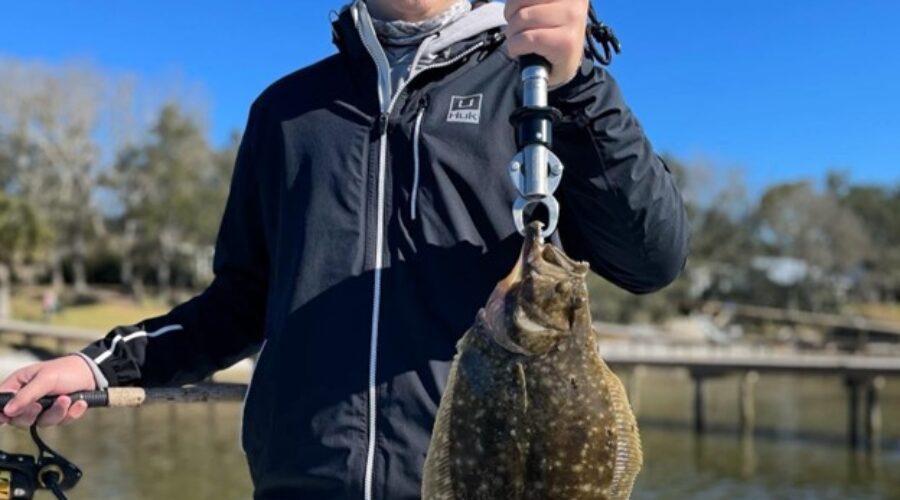How to Fish for Flounder
How to choose the write Bait for Flounder
You can fish for flounder using pinfish, minnows, croakers, or shrimp. If you’re feeling frisky use bacon cut into small strips or chunks. Flounder also eat finger mullet, but the bait size all depends on the size of flounder you’re looking to catch. A budget friendly bait option is cut-bait, which is an easier way to attract because of the fresh smell, but in my personal opinion. However, nothing is better than live bait. Cut-bait, on the positive side, it is versatile and easier for anglers to pick up at the last minute. Additionally, for those fishermen that cant acquire live bait is plastic lures and bucktail jigs. They are budget friendly as well and work just as well as live bait in most cases. When fishing for flounder, and using plastic lures or jigs, it’s important to remember to make sure you have steady movement, bouncing the jig head on top of the water. We have found that lighter colors on lures such as pink, yellow, white, light blue, are more effective depending on the time of year and water temperature. Be sure to keep your bait low and pull slow with small fast snags in between. Most fishermen find this to be the most efficient means of catching flounder. Keep reading to learn more about how to fish for Flounder.
Where to fish for Flounder
Flounder mostly stay in shallow inshore waters. However, occasionally flounder can be found in deeper waters. An ideal habitat for flounder is in the sandy, muddy pits on the bottom. Flounder can be caught any time of day, but a lot of anglers prefer to fish for flounder at night-time with LED lights. There are many different types of flounder found in various areas around the Gulf Coast & Eastern Atlantic shore. Summer Flounder also called fluke, can be caught in Chesapeake Bay, Rhode Island, and New Jersey. The best season to fish for flounder, in those areas, would be in the summertime. Southern flounder can be caught all along the gulf coast from south Texas to Florida’s west coast. This specific type of flounder migrates between October and December staying in shallow bays until moving to deeper locations. The winter Flounder, nicknamed “black backs” can be fished off the ledges particularly along the northeast coast in the southern mid-Atlantic region. Finally, the gulf flounder for the most part is fished in the spring and summer throughout the Gulf of Mexico as well as Florida’s east coast.
How to gig for flounder
Flounder gigging is a method of fishing flounder by using a spear or gig to penetrate flounder laying on the bottom and bring them to the top for harvest. Flounder usually lay on the bay floor and don’t move, making them hard to spot but relatively easy to catch. Ironically, it can be more difficult with a full moon present. Flounder typically do not move more than a few feet at a time. This is due to their natural camouflage. Stay patient, work an area slow and keep a good eye out. The downside to gigging is that it’s often hard to tell if the flounder is of legal size before harvest.
In conclusion, you can fish for Flounder in many different areas at different times as long as you are flexible with what bait you use and how you present that bait. Fishing for flounder is simple given the right tactics and bait. Flounder is mostly found in sandy-muddy bottoms. For the most part they are caught all year round with Gulf Flounder and Southern Flounder sometimes migrating during any given season. Fishing for flounder can be a little different than what many fishermen are used to so if you want to give it a try, please contact us!



